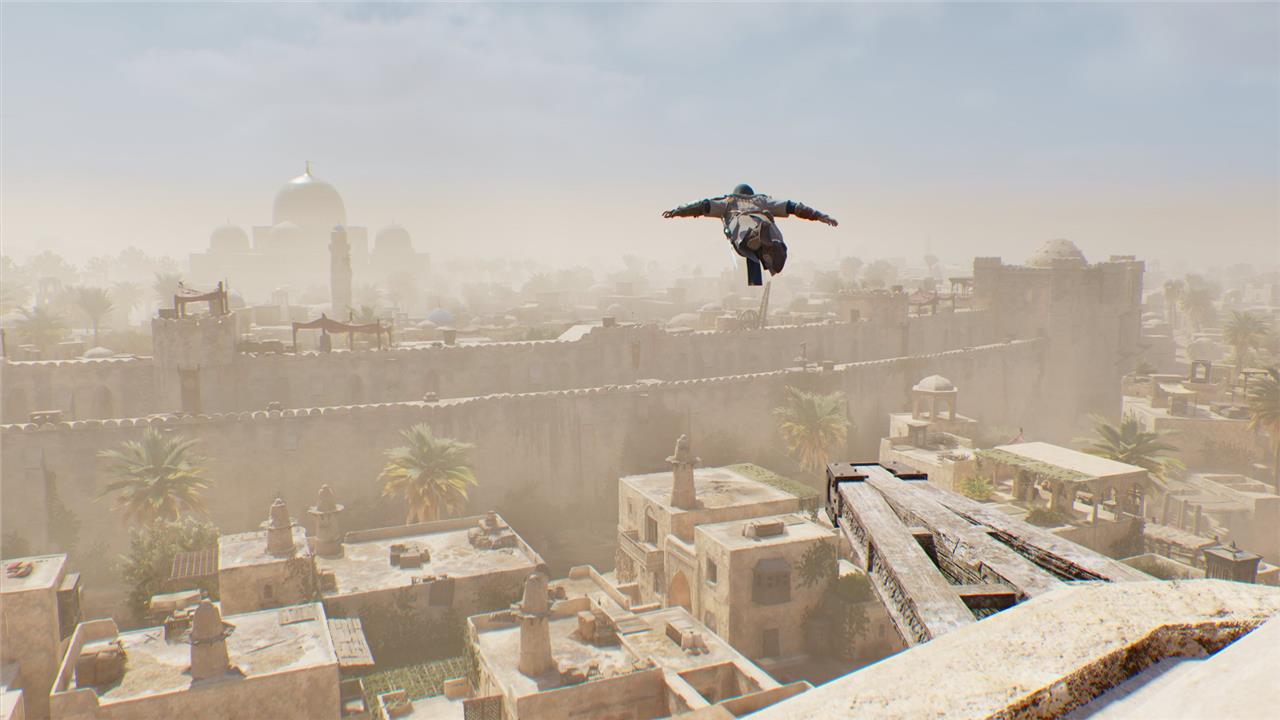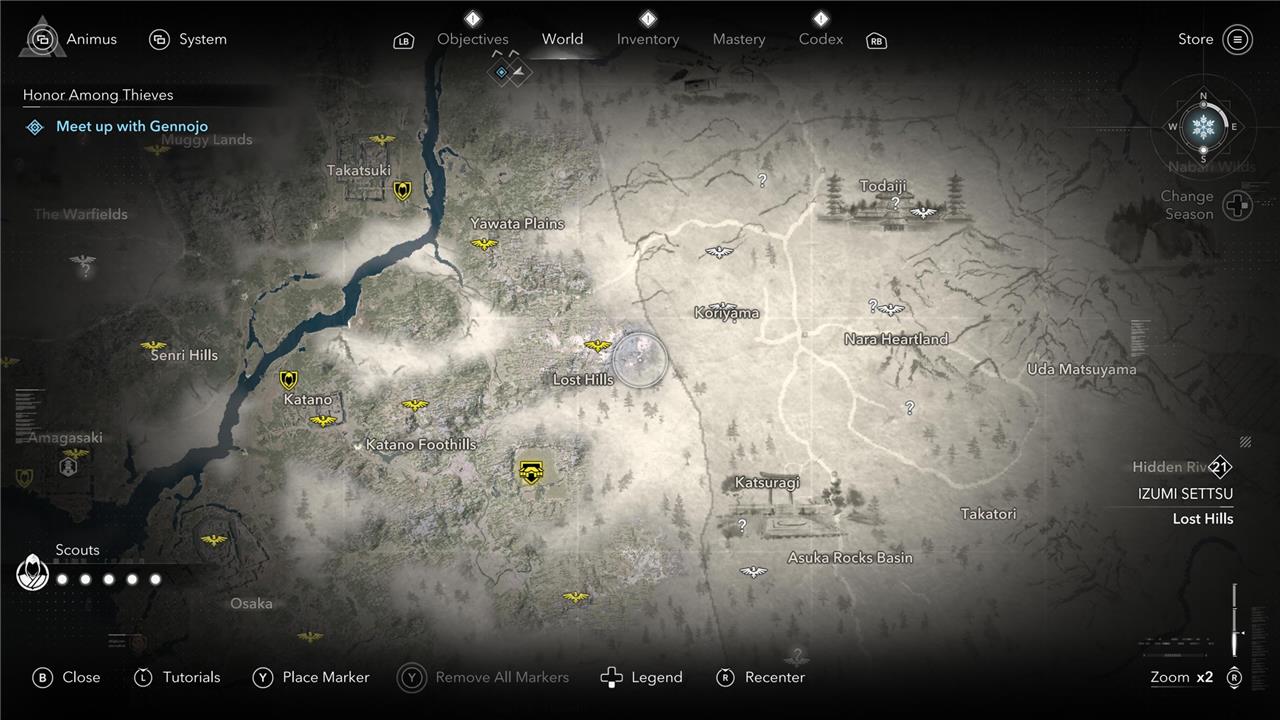Assassin’s Creed Shadows strikes the perfect balance between scale and substance, delivering a richly detailed world that’s expansive without overwhelming, blending the best of classic stealth with modern RPG depth. Unlike its predecessors, Shadows trims the bloat to offer a focused, immersive experience that invites exploration and mastery without feeling like a chore-making it arguably the ideal Assassin’s Creed game size for 2025.
That’s not a remark on the launch-window buzz for Assassin’s Creed Shadows (3 million players in a week) or the cultural cachet earned by its social media managers (so far, at least one vindictive billionaire defenestrated on his own social media platform). It’s meant quite literally: Assassin’s Creed Shadows is a massive game, and that rules.
Over the years, Assassin’s Creed games have evolved from modest open-world stealth adventures into the type of bloat that’s synonymous with “Ubisoft map game.” This evolution culminated with 2020’s Assassin’s Creed Valhalla, which was infamously too much game. The data-tracking site Howlongtobeat puts an average Valhalla playthrough at around 100 hours, and closer to 150 hours for a completionist run. That’s in addition to three expansions and a free roguelike mode that was practically designed in a lab to devour my time. I sunk 91 hours into Valhalla before hitting the credits, and I skipped an entire region of the base game.

In the wake of Valhalla, 2023’s Assassin’s Creed Mirage was a breath of fresh air. The entire game was situated in one city (Baghdad during the 9th century) and its surrounding area, mimicking the form of older series entries like Assassin’s Creed Brotherhood. There were a coupletypes of collectibles and a few recurrent puzzles, but gone were the byzantine menus and stat micromanagement of Origins, Odyssey, and Valhalla. Reviews (including ours at AELGAMES) praised its restraint, and I have to admit, it was nice to play a focused Assassin’s Creed game for the first time in years.
But the recent release of Assassin’s Creed Shadows has unleashed my inner Goldilocks. Valhalla was a tour de force, but with every new gray hair I find, my patience for games of that size wanes. Mirage was a welcome change of pace, but it lacked staying power. Shadows nails the balance.
Where Valhalla presented too many things to do, Mirage lacked the flow that’s been present in every Assassin’s Creed game released into a post-Witcher 3 world. You know the one: You scale a castle spire or a giant tree or the central mast of a galleon. You scan the horizon and assess all the little question mark icons peppering your view. Then you pick one. Because maybe it’s something cool, like a fascinating platforming sequence over a subterranean river. Or maybe it’s something rewarding, like a sword with the word “unique” or “legendary” in its item description. Maybe it’s a quick-time event.

Shadows presents a mastery of this flow state. There’s an almost meditative quality to hopping from objective to objective through the countryside of 16th-century Japan. (It sure doesn’t hurt that Shadows is quite easy on the eyes, rendered with painterly beauty.) Not knowing what you’ll find is part of the fun. And for the most part, what you come across is indeed worth your time.
Sometimes you stumble upon a castle where you’re tasked with assassinating a few high-level enemies in exchange for rare armor, or you could come across a bandit camp replete with resources necessary for your hideout. But these activities are blissfully not all about assassin-ing, despite the game’s name. Platforming gauntlets called Hidden Trails and puzzle dungeons called kofun add some variety. Temples require you to track down a handful of hidden objects known as Lost Pages. Even the quick-time events – rhythm-based minigames called Kuji-Kiri – are compelling: They unlock missions that fill in the backstory for Naoe, one of the dual protagonists.

To be clear, I’m saying this all from the perspective of a pretty leisurely player. I’ve played for a bit more than 20 hours and only justunlocked Yasuke, the second playable character. Peers who’ve finished Shadows say it takes about 40 hours to complete the main story, or something closer to twice that for a completionist run (a lot of time, no doubt, but significantly less than the Oh god, it’s never gonna end vibe of Valhalla). Who knows, maybe I’ll burn out! But at this rate, the pace and the scope of the to-do list are perfect.
Why does Assassin’s Creed Shadows feel just right in size for immersive gameplay
Assassin’s Creed Shadows feels just right in size for immersive gameplay because it strikes a balance between a vast, detailed world and focused, meaningful content. Its map, set in feudal Japan, covers roughly 120 km²-large enough to feel expansive but densely packed with activities and cultural depth, avoiding the overwhelming sprawl seen in some predecessors. The world scale is carefully designed at a 1:16 ratio, which adds a sense of realism to travel distances without excessive empty space, although this sometimes leads to long stretches of road that emphasize immersion over constant action.
Unlike earlier Assassin’s Creed titles that featured sprawling open worlds filled with numerous icons and collectibles, Shadows reduces bloat by encouraging exploration for discovery rather than completionist grinding. The game’s side quests and main missions are crafted to be engaging and bite-sized, allowing players to enjoy satisfying gameplay loops in manageable chunks without feeling rushed or overwhelmed. Additionally, the dual protagonists offer distinct playstyles that complement the world’s design, enhancing variety without diluting the experience.
Overall, Shadows’ world size and content density promote a more focused and fluid experience, blending the series’ classic stealth and parkour elements with modern RPG depth, making it feel immersive without being exhausting or bloated.
How does the 1:16 scale enhance the feeling of realism in Shadows
The 1:16 scale in Assassin’s Creed Shadows enhances the feeling of realism by providing a carefully calibrated world size that mirrors real-world distances in a manageable way. This scale allows the game to depict travel and exploration with a sense of authenticity-distances feel believable without becoming tedious or artificially compressed. By maintaining this proportion, the game creates a spatial experience that feels natural, where landmarks, terrain, and travel times correspond to what players might expect in a real environment, thereby deepening immersion.
This realistic spatial scaling works alongside detailed environmental lighting and shadow effects, which add depth and texture to the world, reinforcing the three-dimensionality and materiality of objects and landscapes. Proper use of light and shadow in the game’s visuals further accentuates the sense of scale and realism, making the world feel alive and tangible rather than flat or game-like. Together, the 1:16 scale and nuanced lighting create a balanced, believable setting that invites players to lose themselves in Shadows’ feudal Japan without breaking immersion.
